Australia is not a forgiving place. While it’s people might be some of the kindest and most welcoming on earth, its landscape is anything but. Bone-rattling corrugations lead across sun-scorched deserts for days without fuel or water. Tight trails through dense rainforests are crisscrossed with deep fords through swirling rivers, and if the coastal drives don’t claim your truck with their tides, they’ll try to finish the job with rust. All in all, it’s not the easiest place to operate a vehicle, but it’s certainly the ideal spot to test one. That’s why Zone RV set out to prove their trailer’s mettle on some of the Outback’s most beloved tracks, the Gibb River Road, Tanami Highway, and Plenty Highway. You’ll find the whole story on that below, but first, let’s take a look at the trailers themselves.
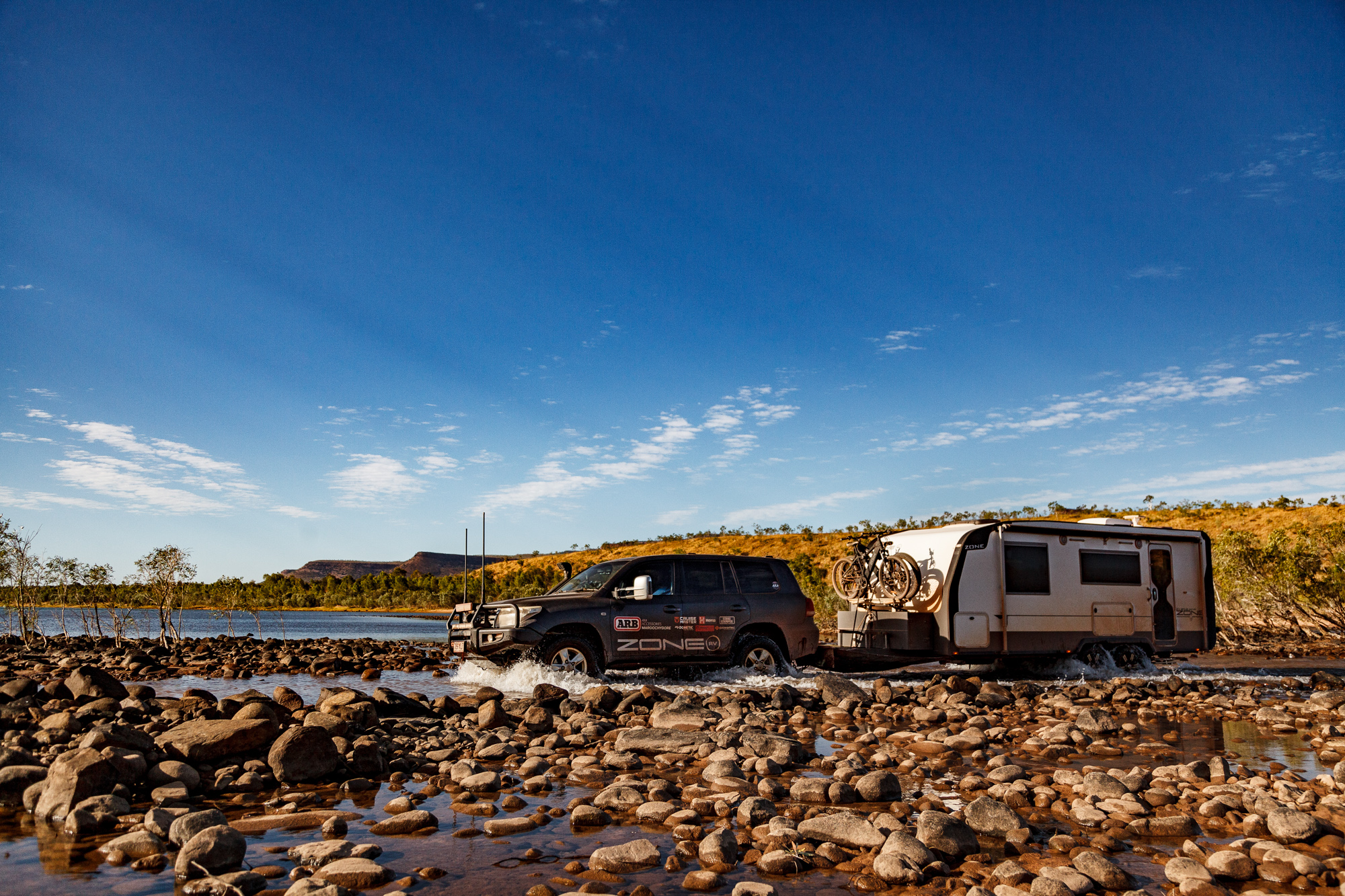
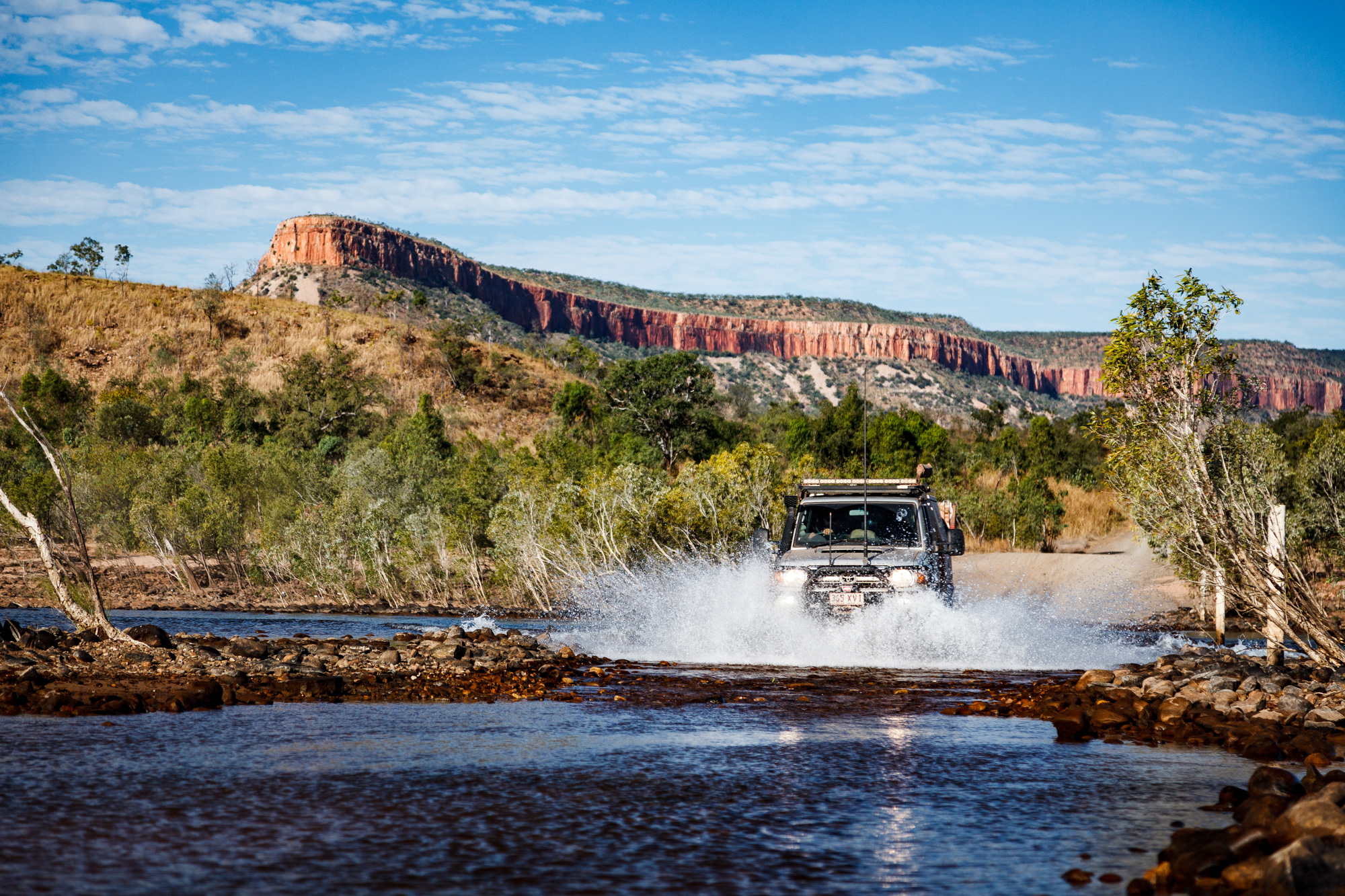
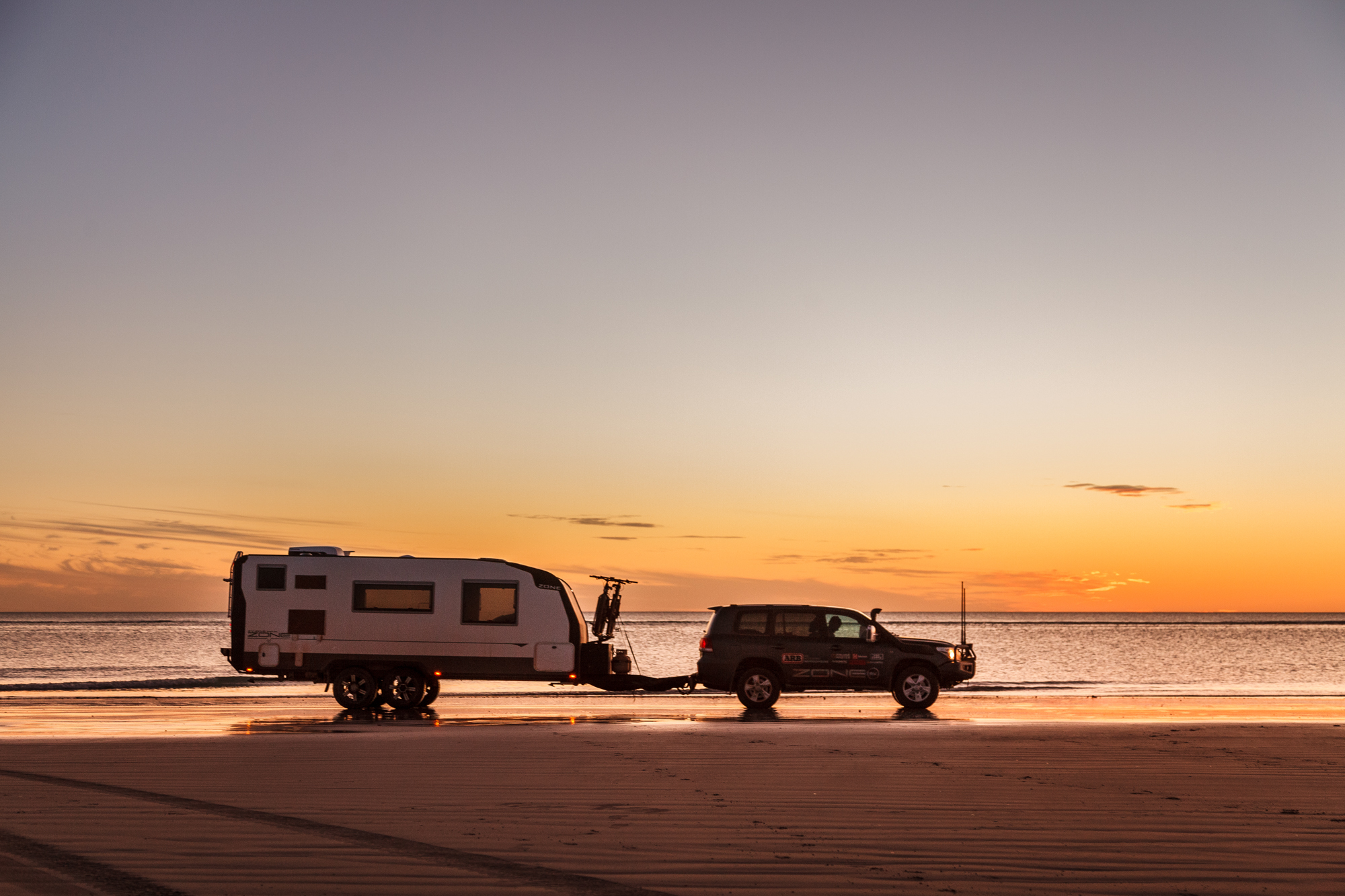
If you’re not familiar with Zone, don’t worry, you’re not alone. Although this company has been taking the Australian caravan market by storm for the past few years, they haven’t quite made it to North America. Now inevitably, many of you are probably thinking “Great, another product we can’t own. Why should I care?” Well, for two reasons. First, the founders intend to expand their business to the US market as soon as enough interest arises, which based on the recent arrival of Black Series and Kimberly Kampers here in the States, could be fairly soon. Second, their trailers are just plain awesome, and quite frankly, leaps and bounds ahead of anything we have here now. Just take a look below and you’ll see what I mean.
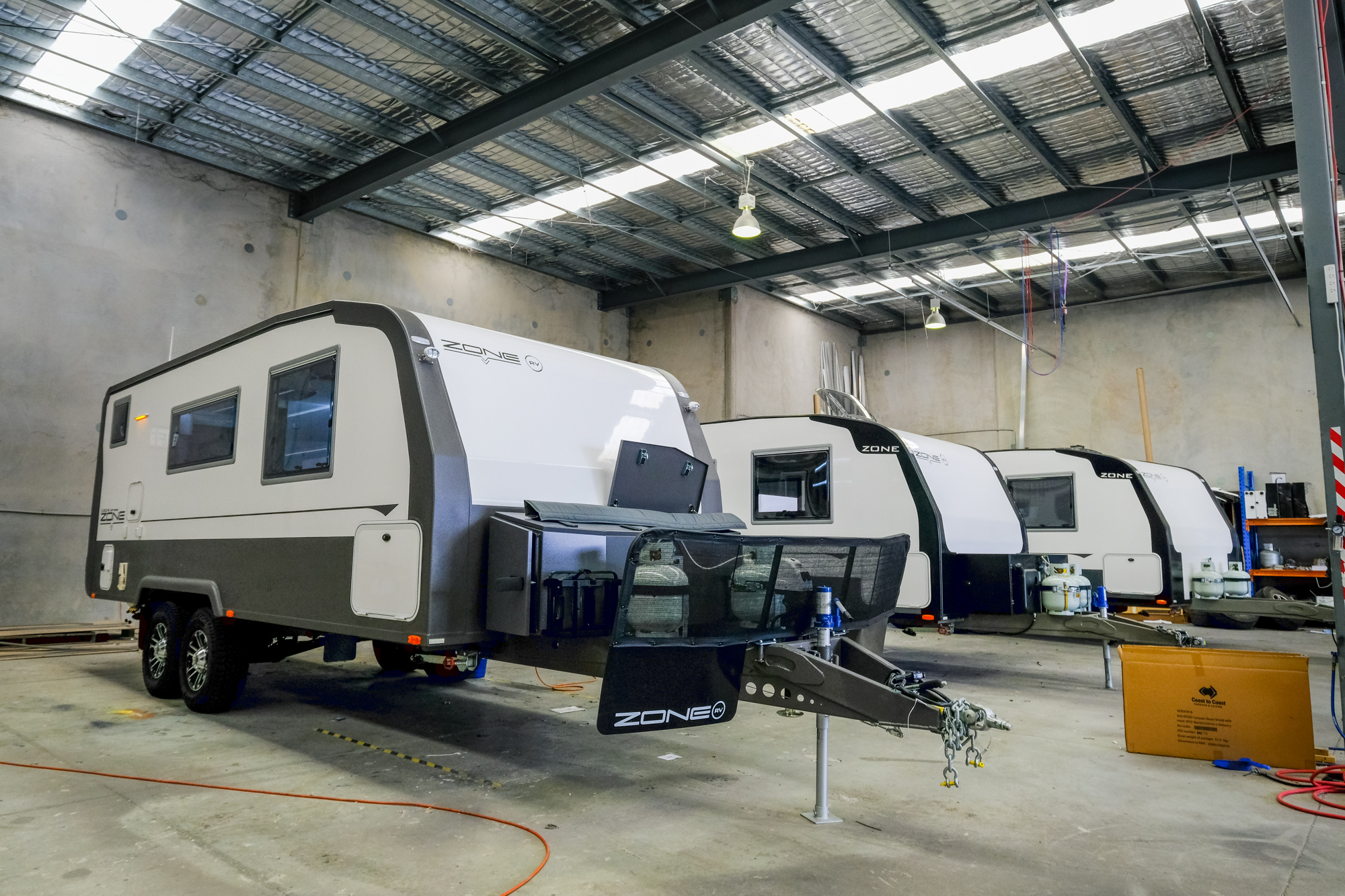
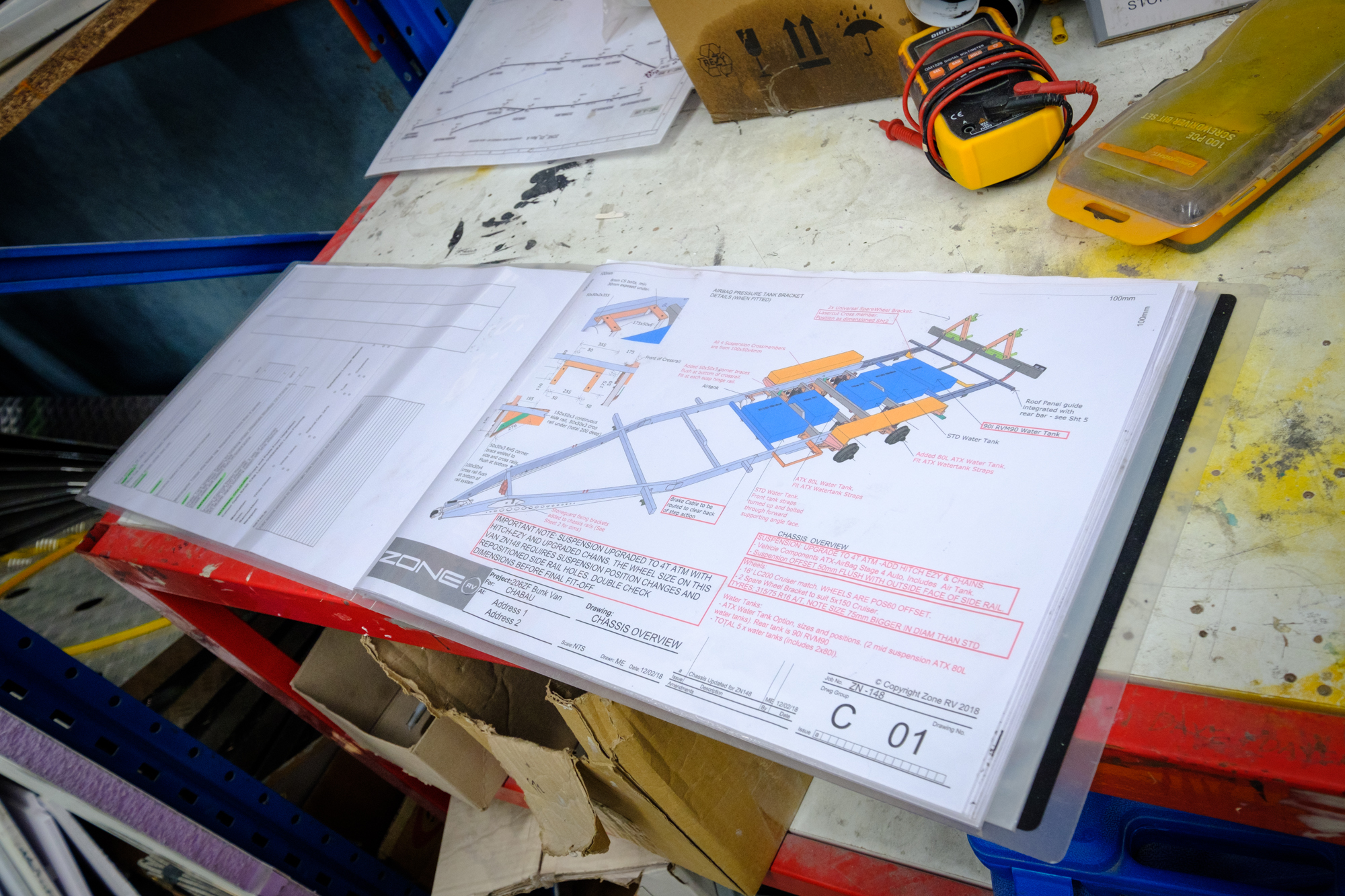
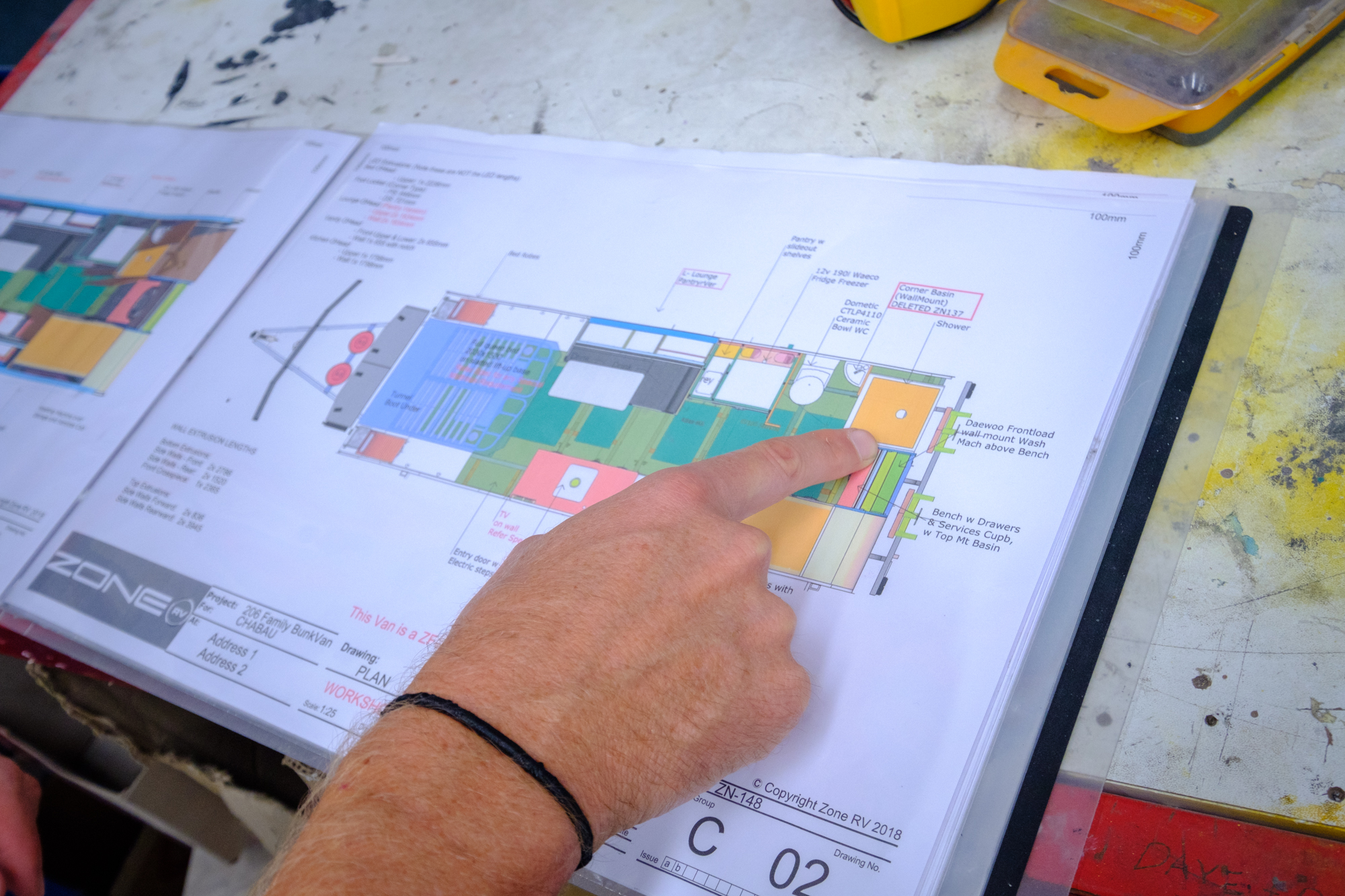
Each Zone is handbuilt by experienced craftsmen in their private factory outside Coolum Beach and combines the quality and durability Aussie products are known for, with the clean modern touches the founders have been using in the yachting industry for years. Customers can choose from a number of lengths, layouts, and interior options, including features like washers and dryers, surround sound systems, and wine coolers. Storage is abundant, and the space efficiency of each layout is surprising. While walking around in a 19-foot model, I was shocked that it seemed to have as much room as the 25-foot trailers I had seen back in the States. Certain aspects, like the shower and bathroom, actually felt larger.
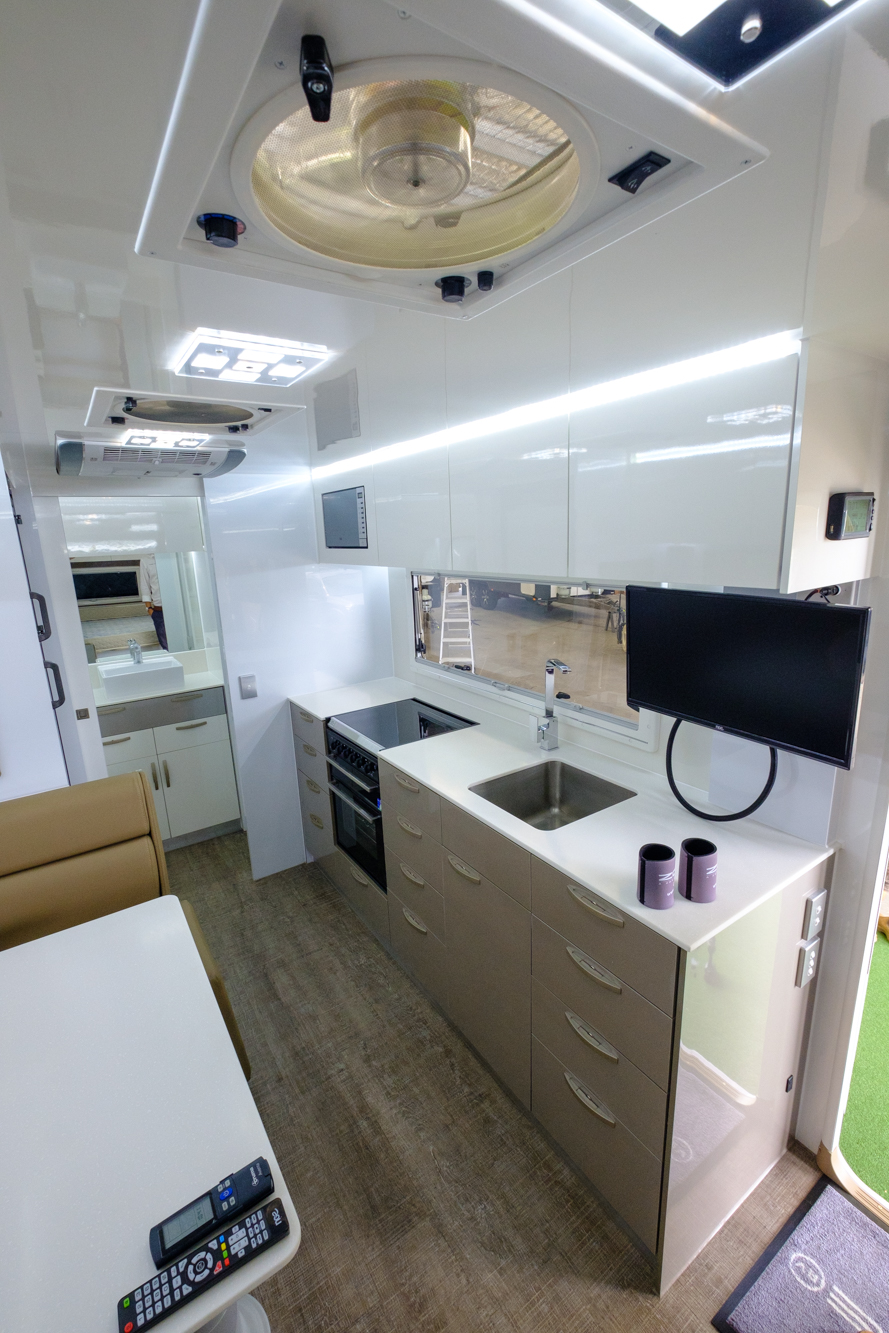
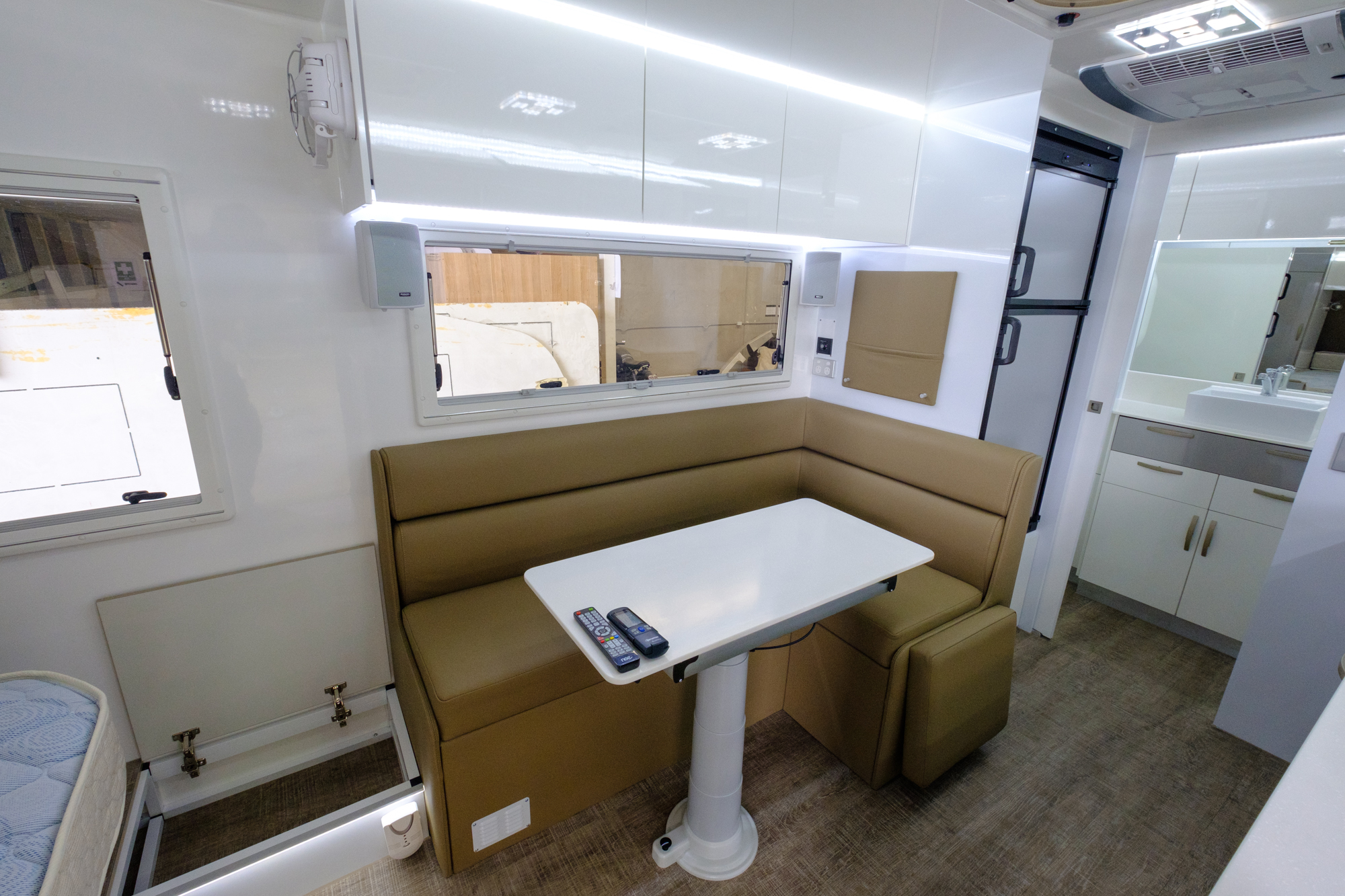
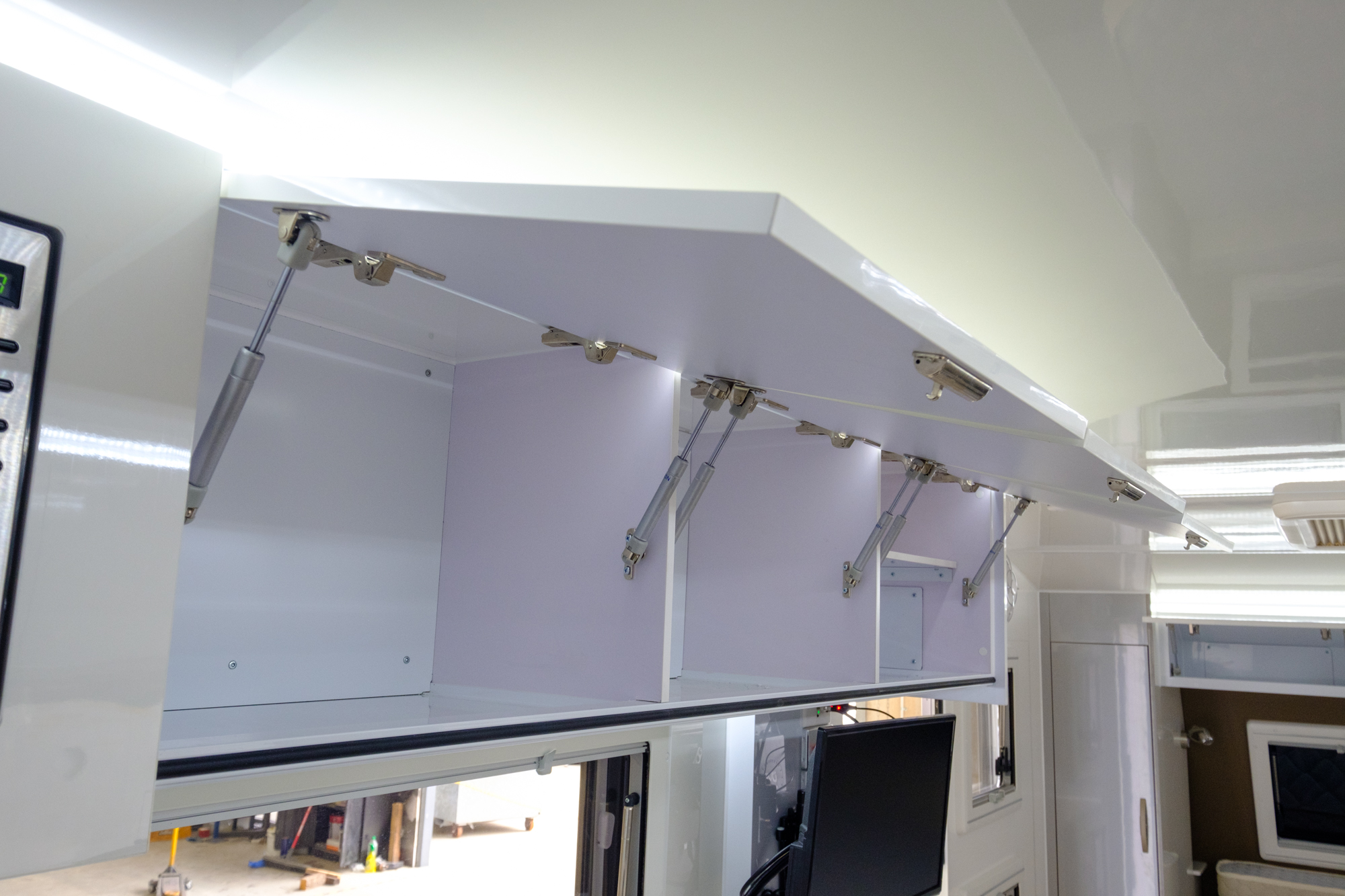
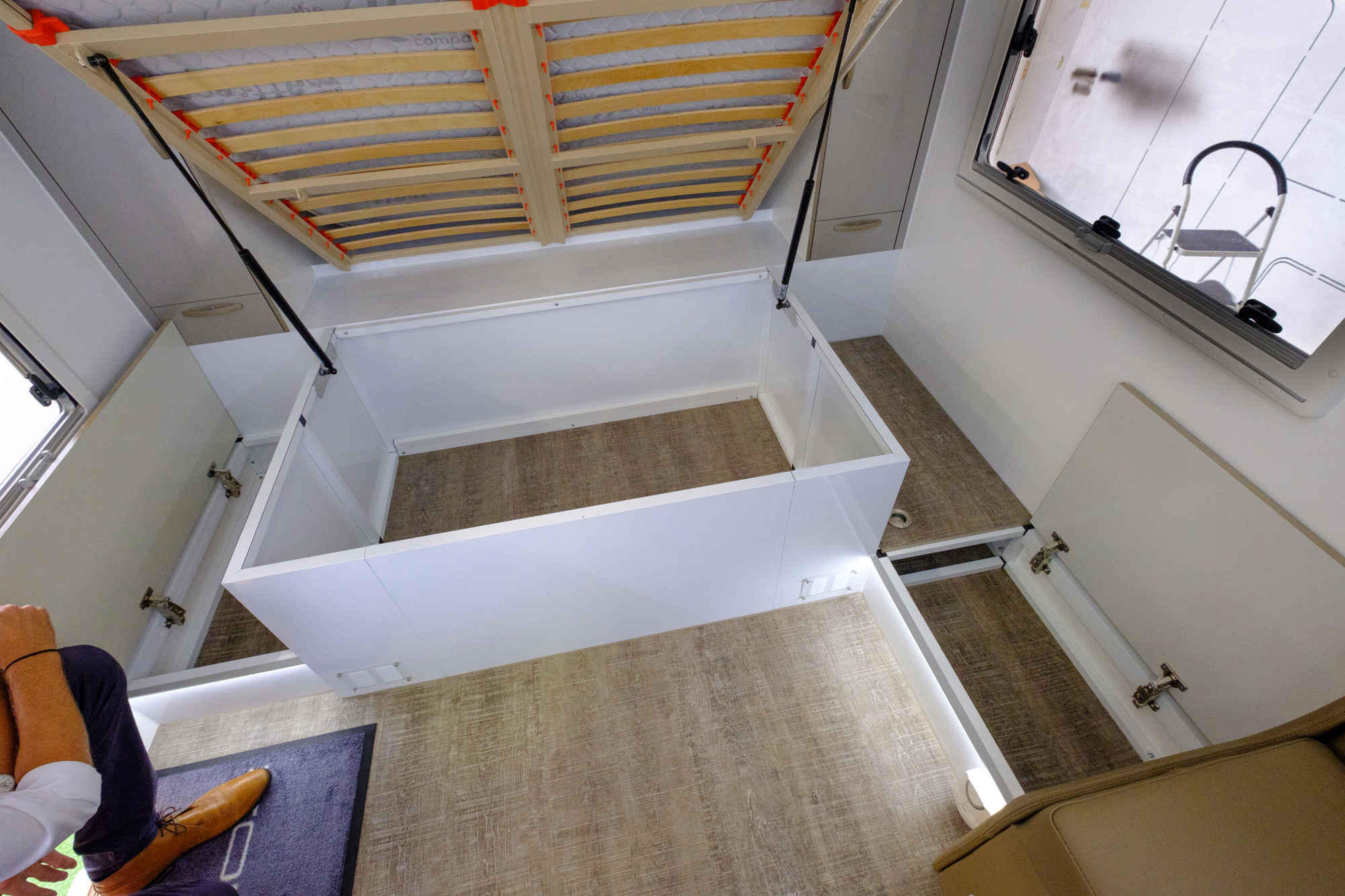
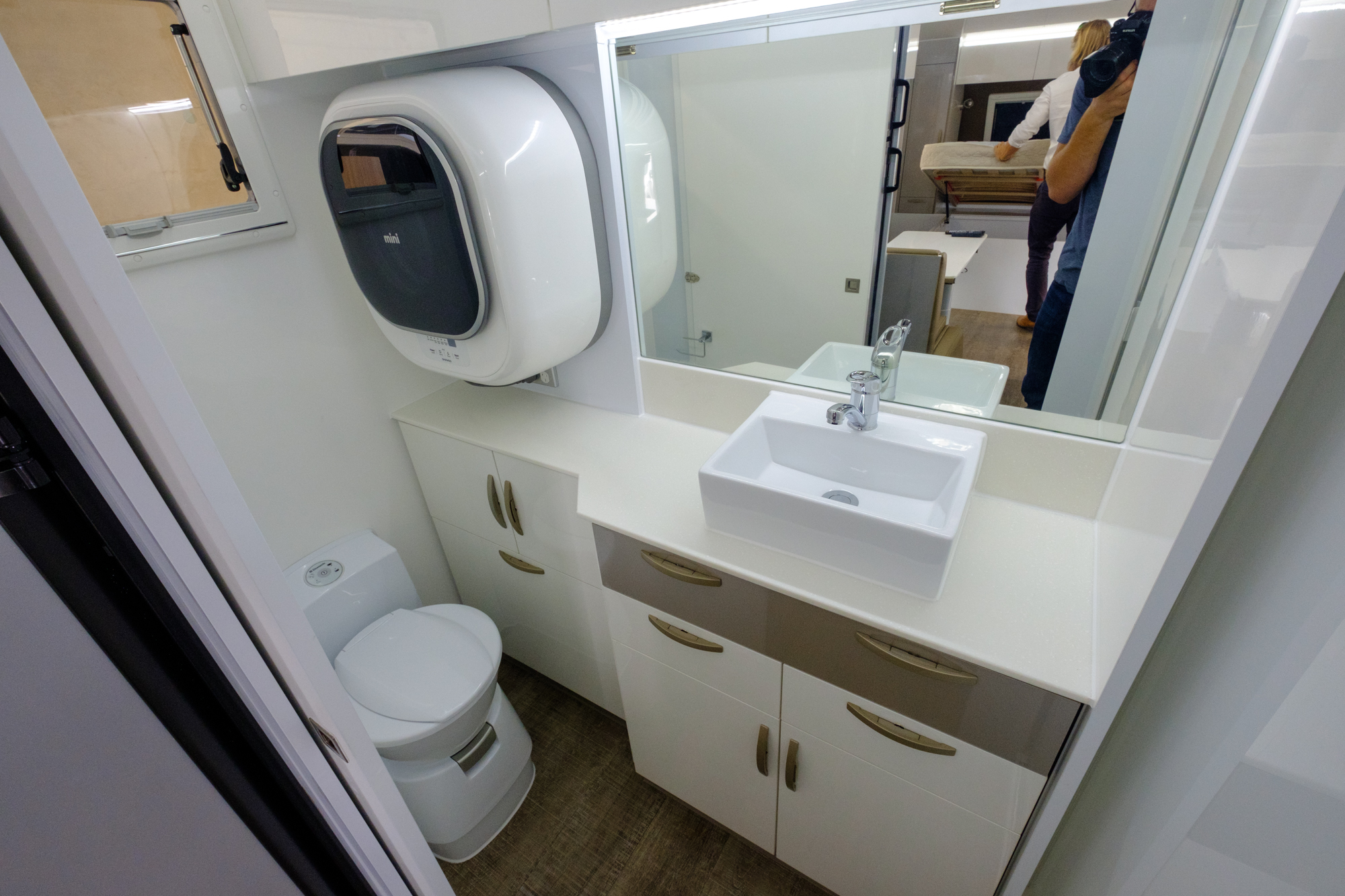
Of course, space efficiency and nice features alone don’t make a trailer resilient enough for the Outback. To survive these trips time and time again requires some serious engineering, and that starts from the ground up. The standard reinforced ladder-style frames are coated inside and out with a special corrosive resistant liner, and for those looking for even more protection, there’s a fully galvanized option. Large gussets and reinforcement brackets line the tongue, and CAD designed, laser-cut components ensure precise fits.
The walls, cabinets, and other internal parts are entirely composite, and marine grade hardware and components are used throughout the trailer. The shell, which is coated in a UV stabilized raptor liner, is assembled in just three interlocking pieces and then bonded to the floor. This minimizes connection points and keeps the entire structure strong and light.
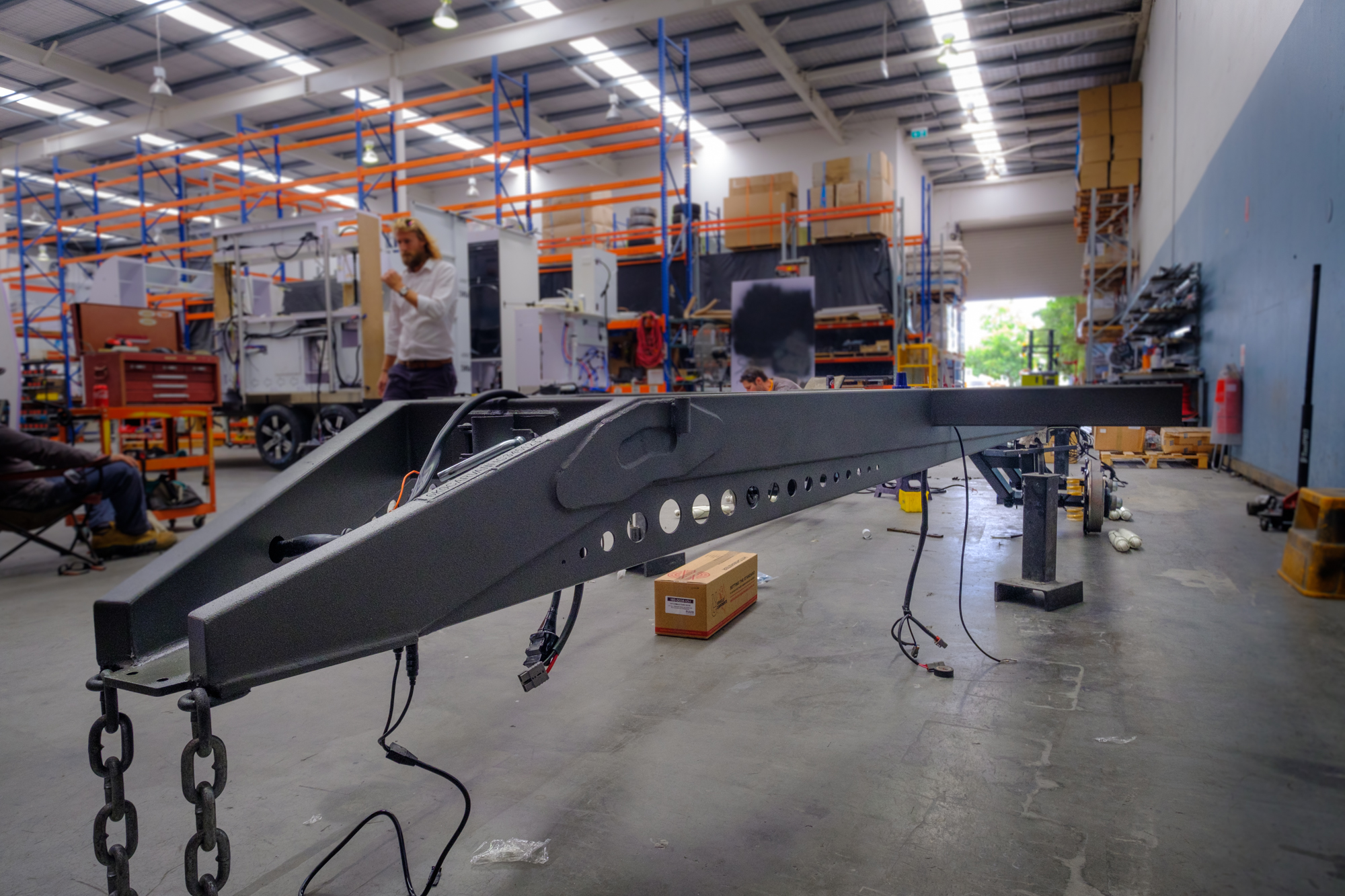
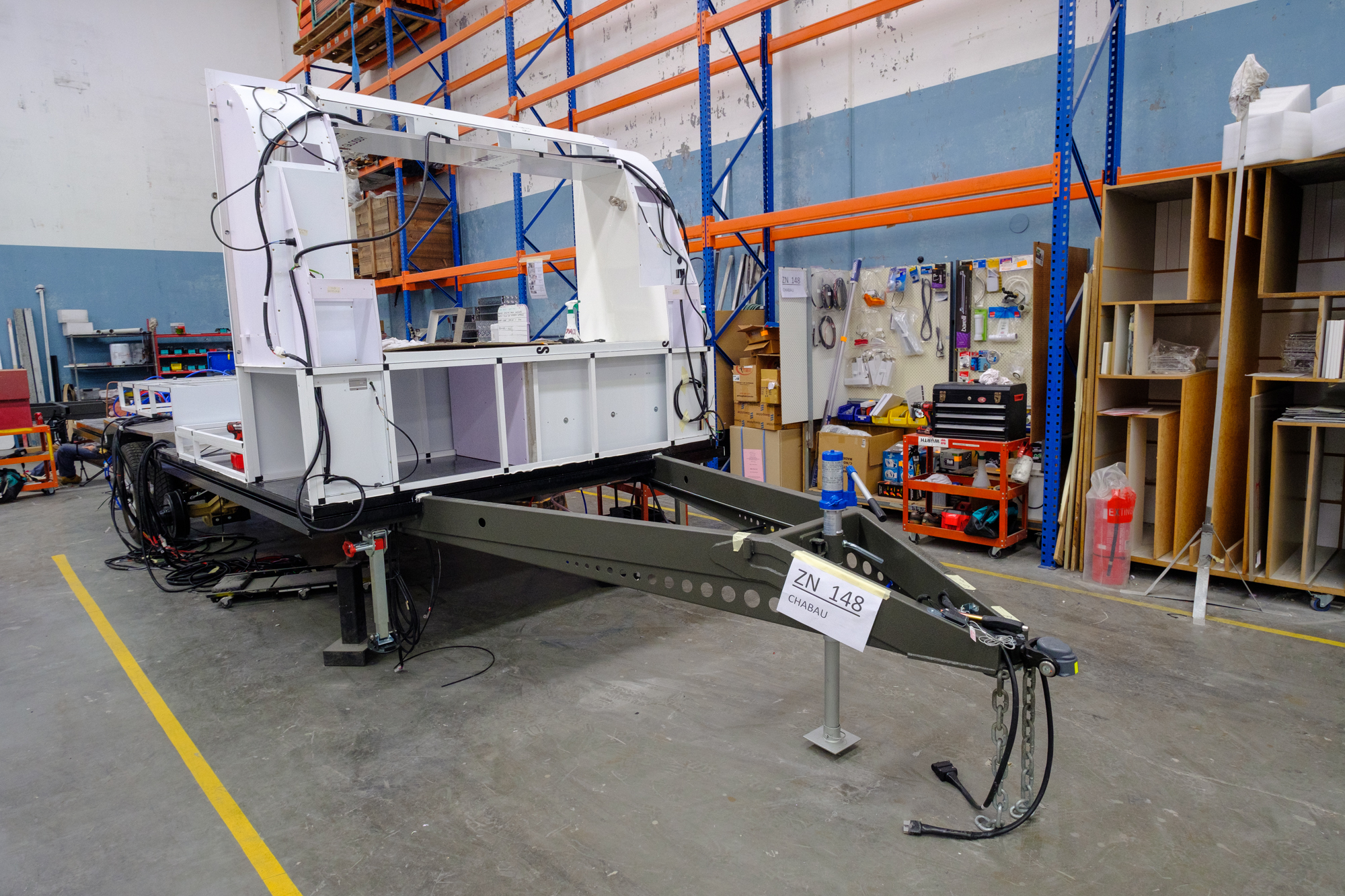
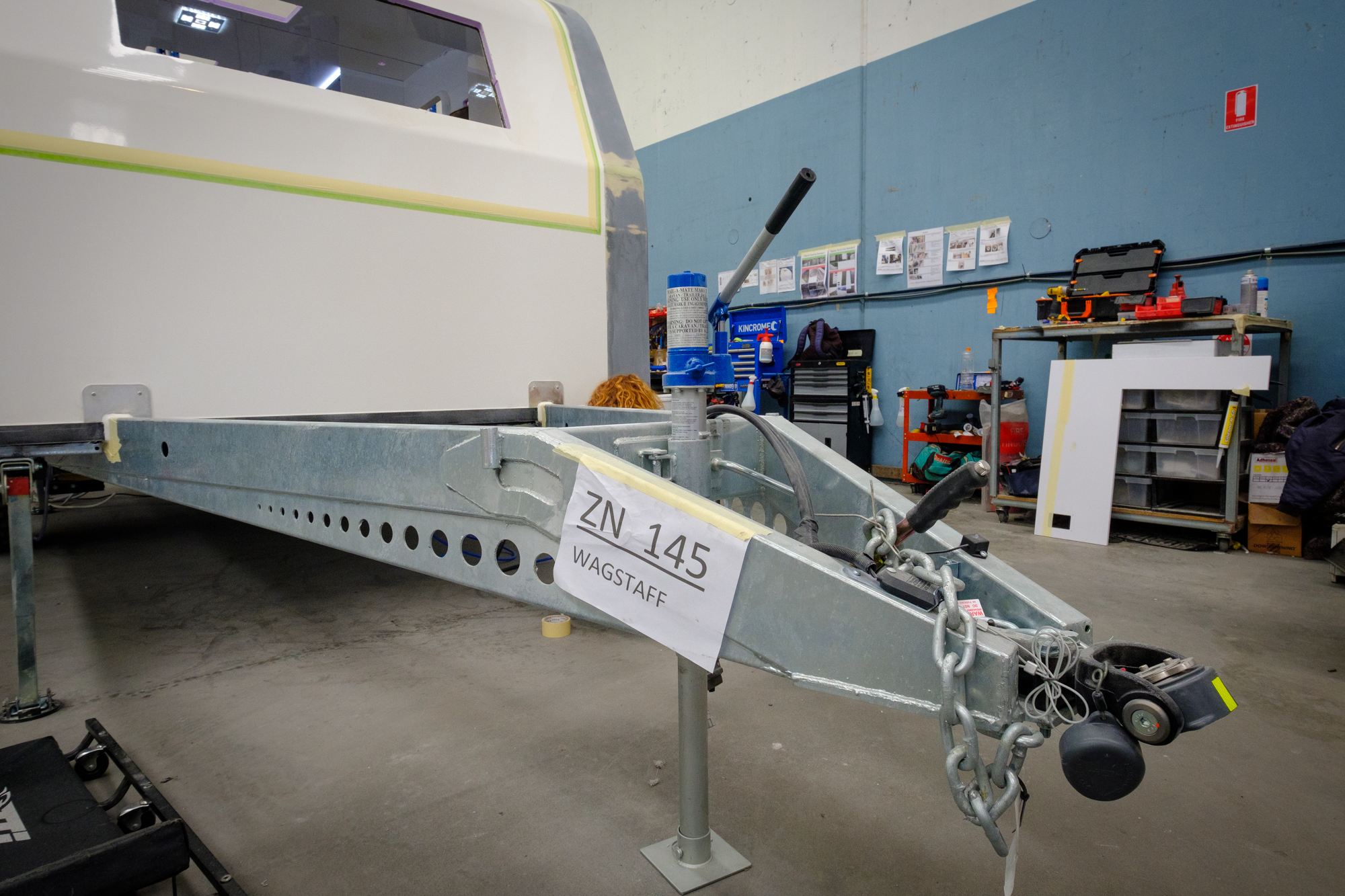
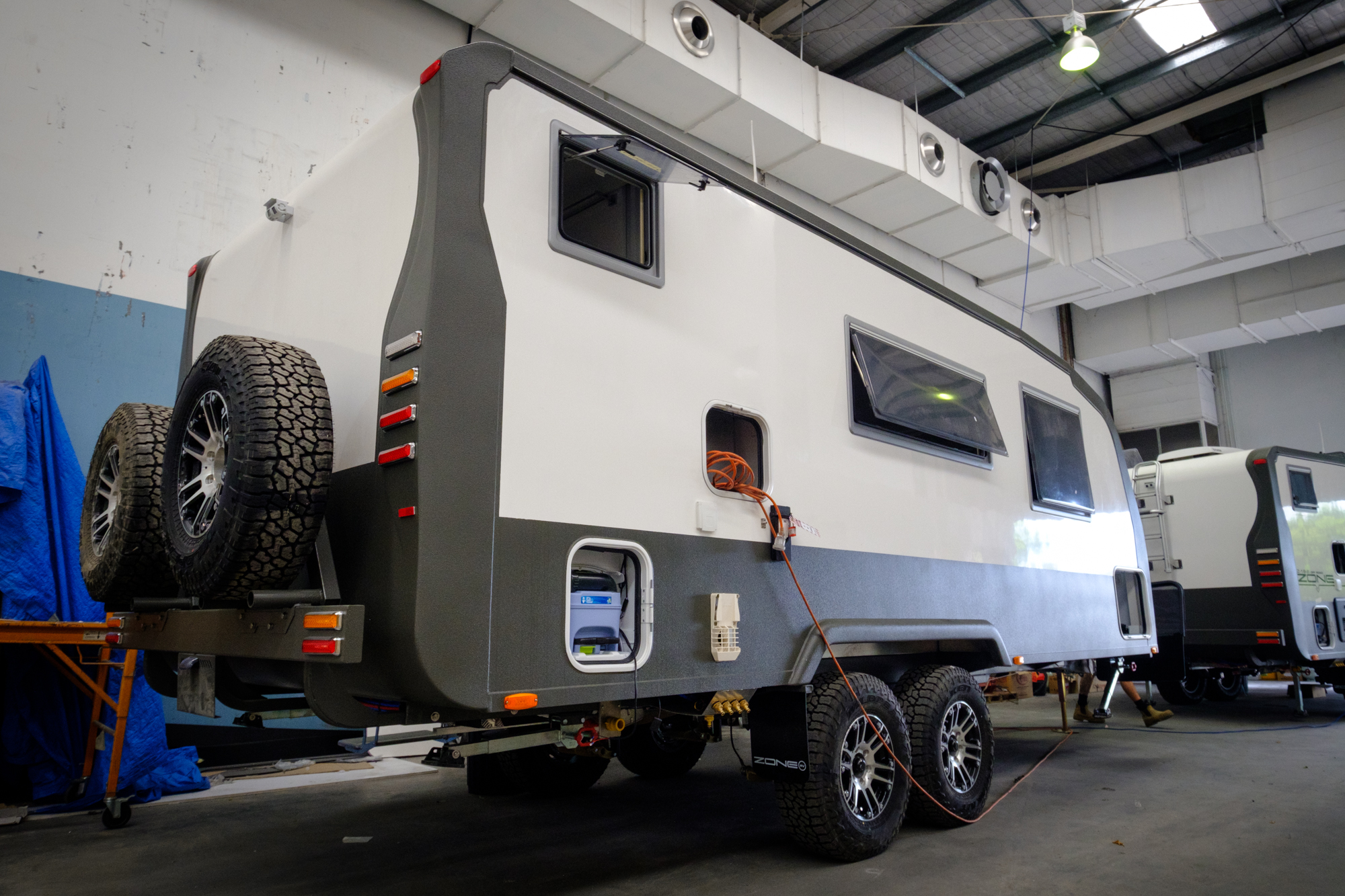 Once the body and frame are fully assembled, they’re able to move on to the trail upgrades, and things begin to get really fun. Off-Road models come with components like a fully independent A-arm suspension system, skid plates, solar panels, water filtration, and up to 33-inch tires. Air ride kits with leveling features can be added, and the aftermarket accessory list is practically endless. Basically, if your heart desires it, and your pocketbook can fund it, they will find a way to make it happen. The result is an absolutely stunning luxury home with the ability to go nearly anywhere you want to take it.
Once the body and frame are fully assembled, they’re able to move on to the trail upgrades, and things begin to get really fun. Off-Road models come with components like a fully independent A-arm suspension system, skid plates, solar panels, water filtration, and up to 33-inch tires. Air ride kits with leveling features can be added, and the aftermarket accessory list is practically endless. Basically, if your heart desires it, and your pocketbook can fund it, they will find a way to make it happen. The result is an absolutely stunning luxury home with the ability to go nearly anywhere you want to take it.
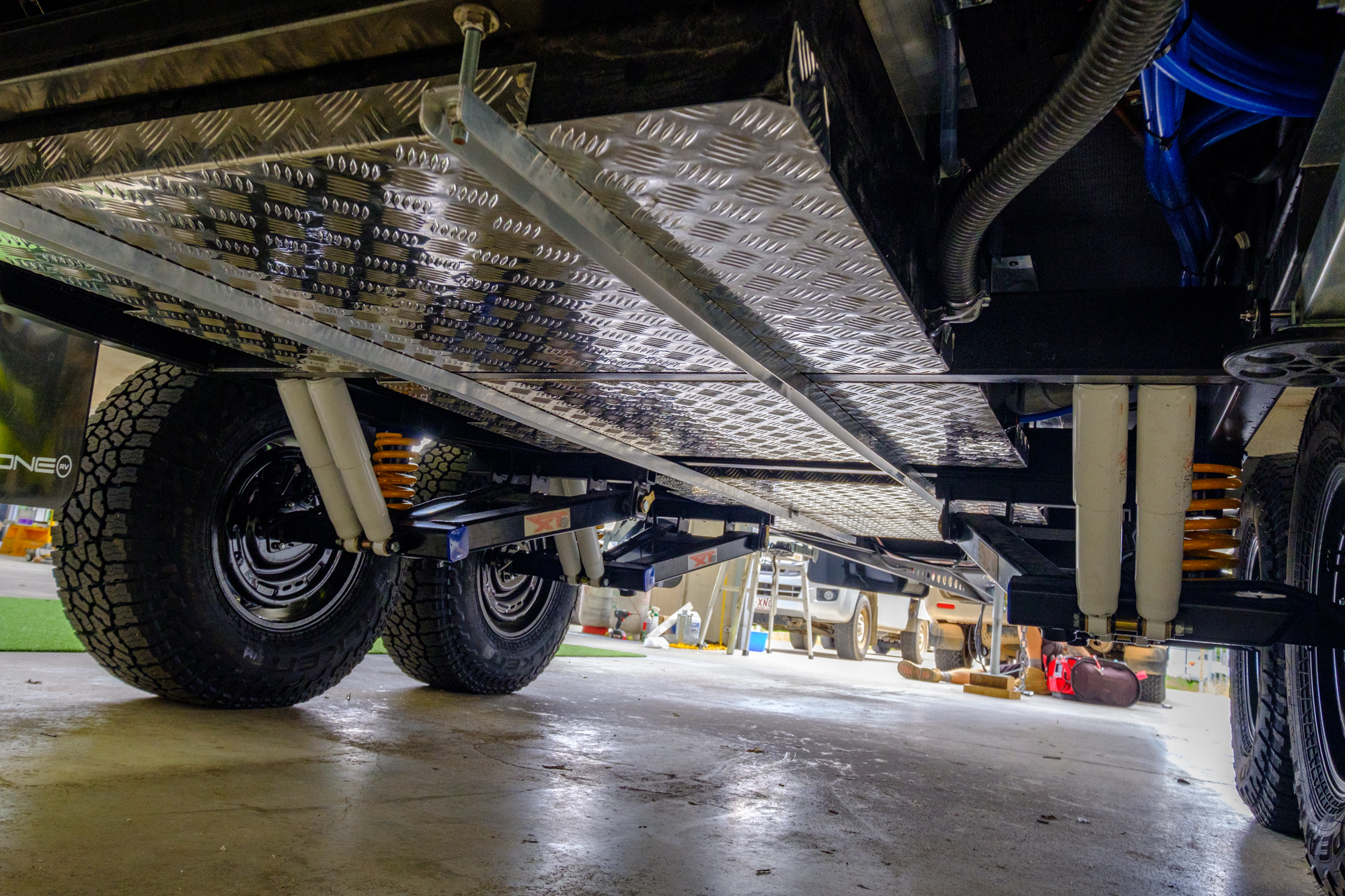
But just how far can you take it? Well, that’s a question that the owners wanted to answer with first-hand experience. They went beyond the engineers, beyond the computer models, and straight to the dirt-filled, sand-strewn, corrugated tracks of the Outback. They created an engineering expedition, one their team dubbed the Triple Crown Tour.
The Triple Crown was led by Zone RV Directors Matt Johns and David Biggar, along with one of their good friends from ARB, and a few lucky employees from Coolum Beach. The tow rigs were diverse, but comprised of the usual Australian suspects: a beautiful Ford Ranger, a 70 Series Land Cruiser, and a 200 Series Land Cruiser. Each was well built, but it was the trailers that stole the show. There were three: a Z-16.6 Off-Road, the smallest size in the range; a ZV-20.6 Venture, the only non-off-road model on the trip; and the Z-21.6 OffRoad, the flagship trailer of the fleet.
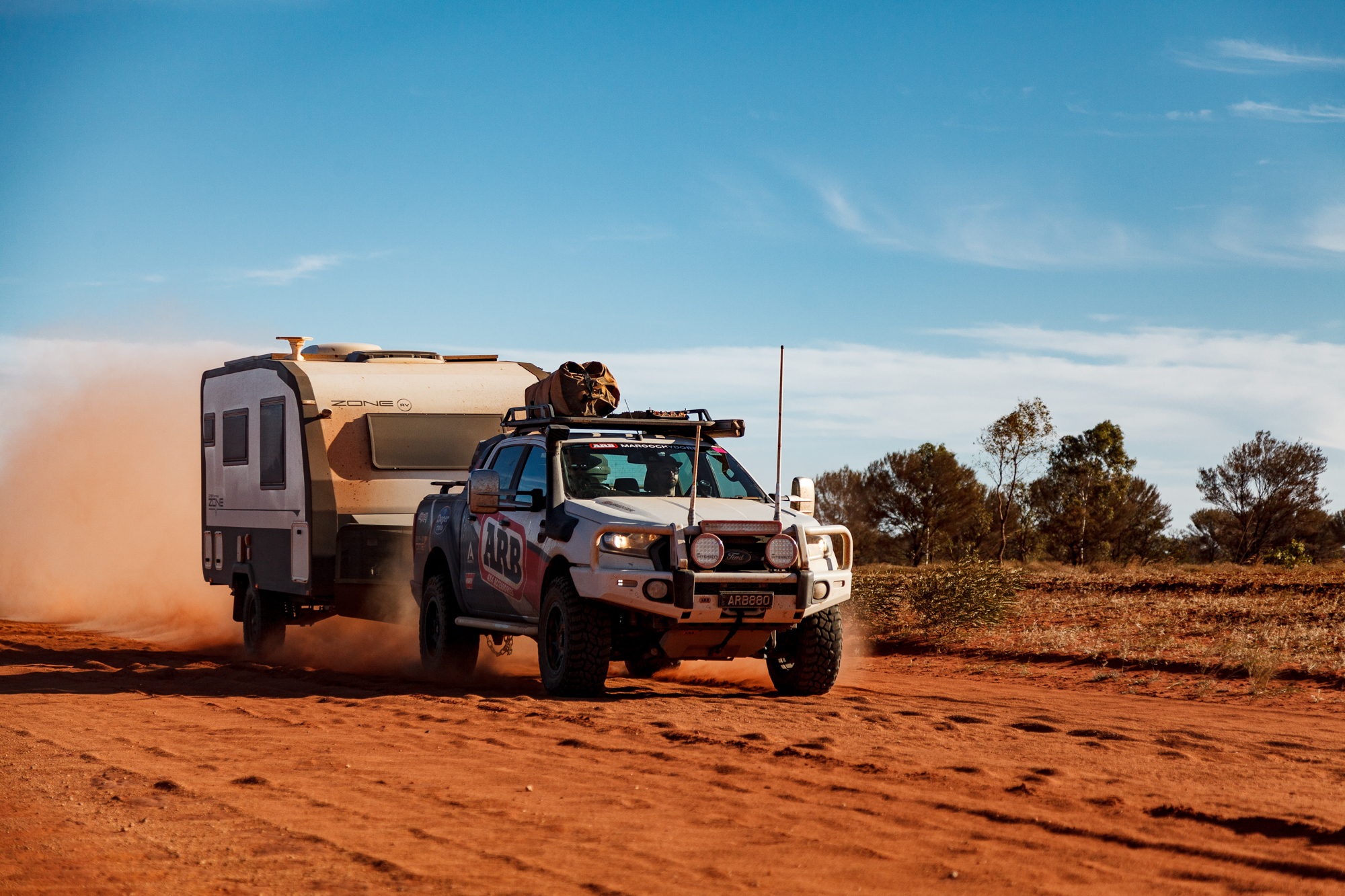
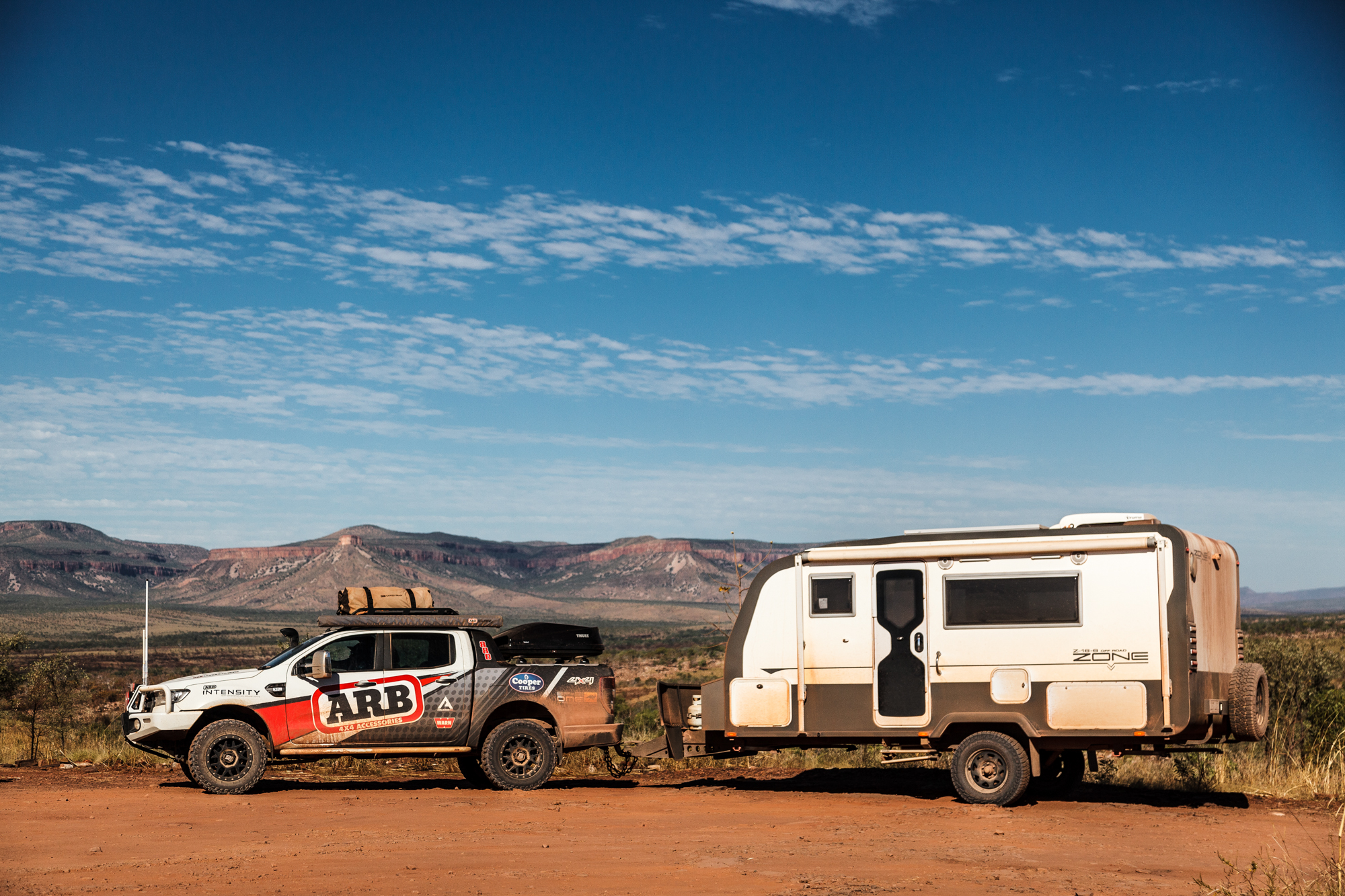

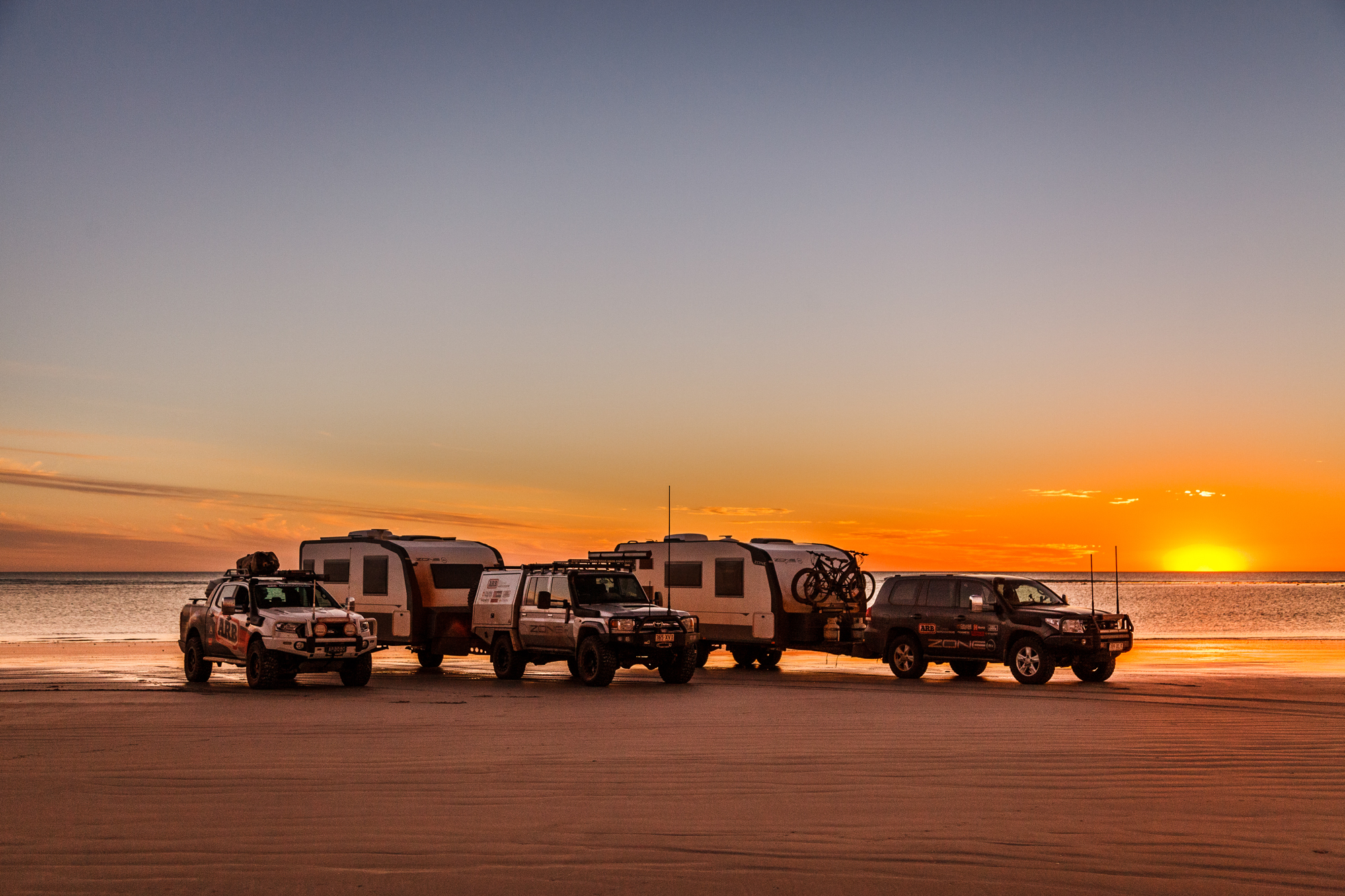
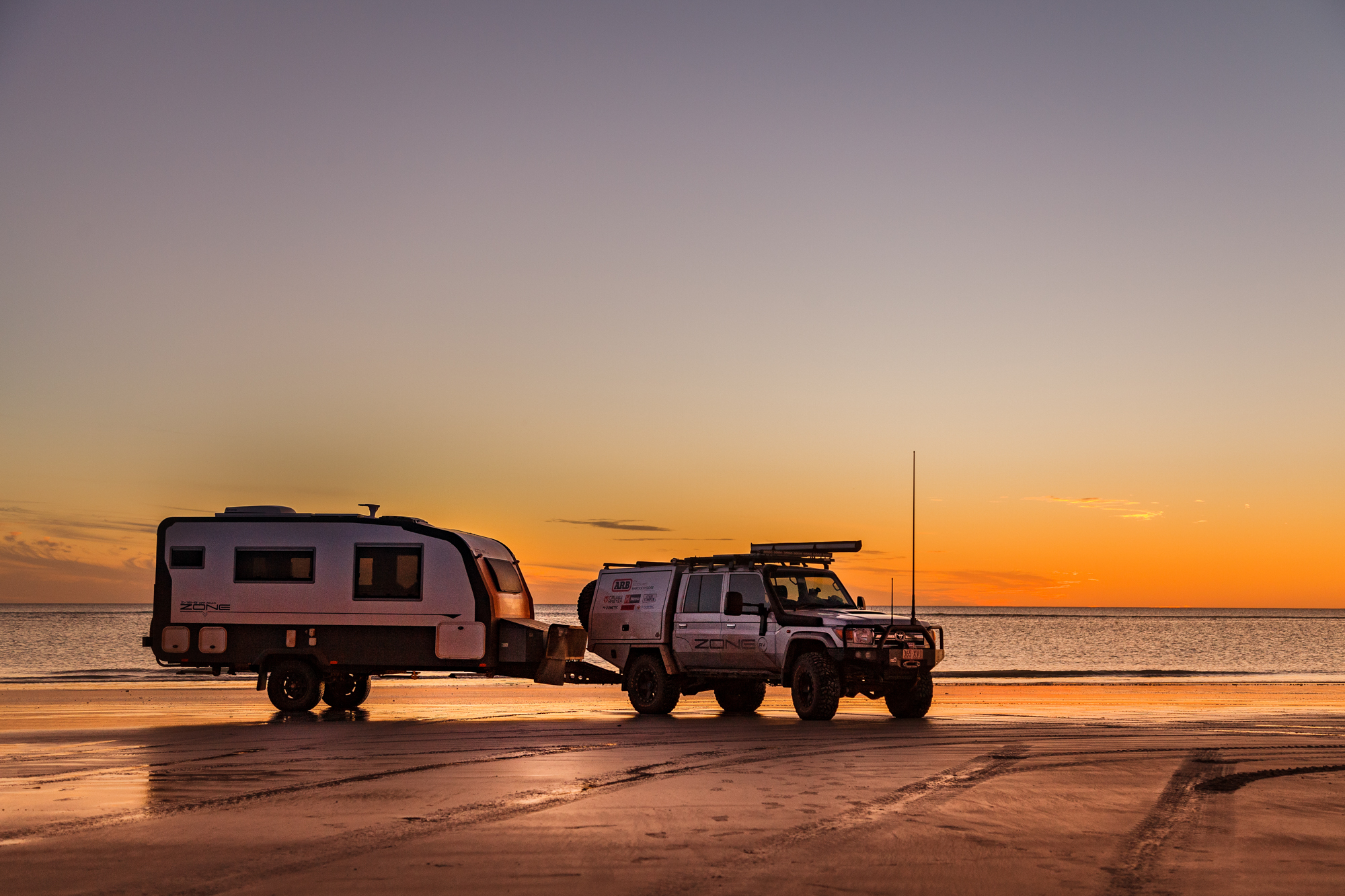
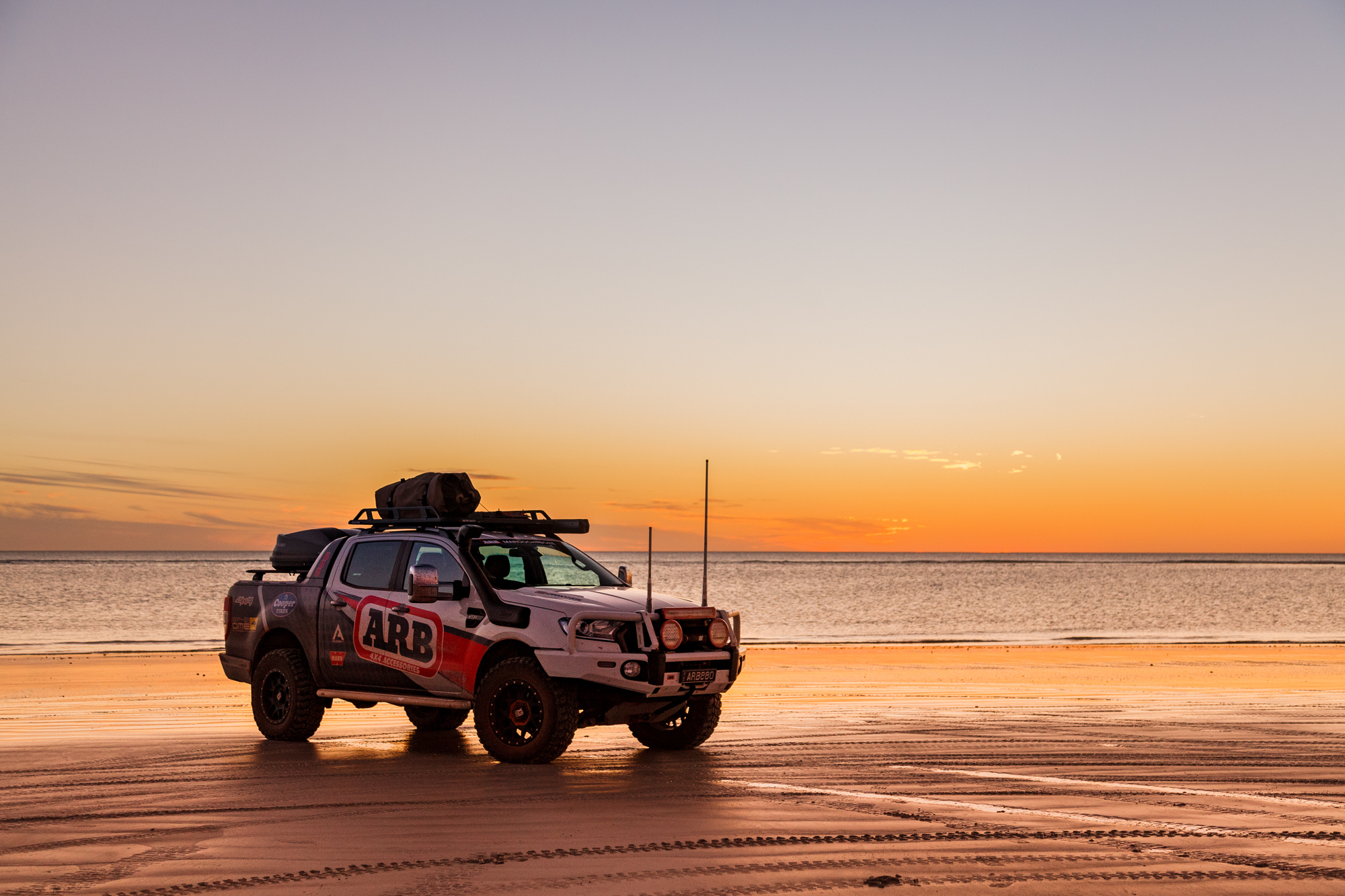
 Their two-week journey would lead them over enormous sand dunes, through deep water crossings, and across rocks and ruts that would tear most trailers to shreds, perfects conditions for determining just how durable their caravans could be. Along the way, their team captured a recap of each day in an 11-part video series available for free on YouTube. In each segment, they talk about the challenges they faced, any issues encountered with the trailers, and even provide some helpful advice and technical knowledge for anyone towing off-road. If you think that all sounds a bit boring, don’t worry, each segment includes plenty of action and scenic views as they make their way across these remote routes.
Their two-week journey would lead them over enormous sand dunes, through deep water crossings, and across rocks and ruts that would tear most trailers to shreds, perfects conditions for determining just how durable their caravans could be. Along the way, their team captured a recap of each day in an 11-part video series available for free on YouTube. In each segment, they talk about the challenges they faced, any issues encountered with the trailers, and even provide some helpful advice and technical knowledge for anyone towing off-road. If you think that all sounds a bit boring, don’t worry, each segment includes plenty of action and scenic views as they make their way across these remote routes.
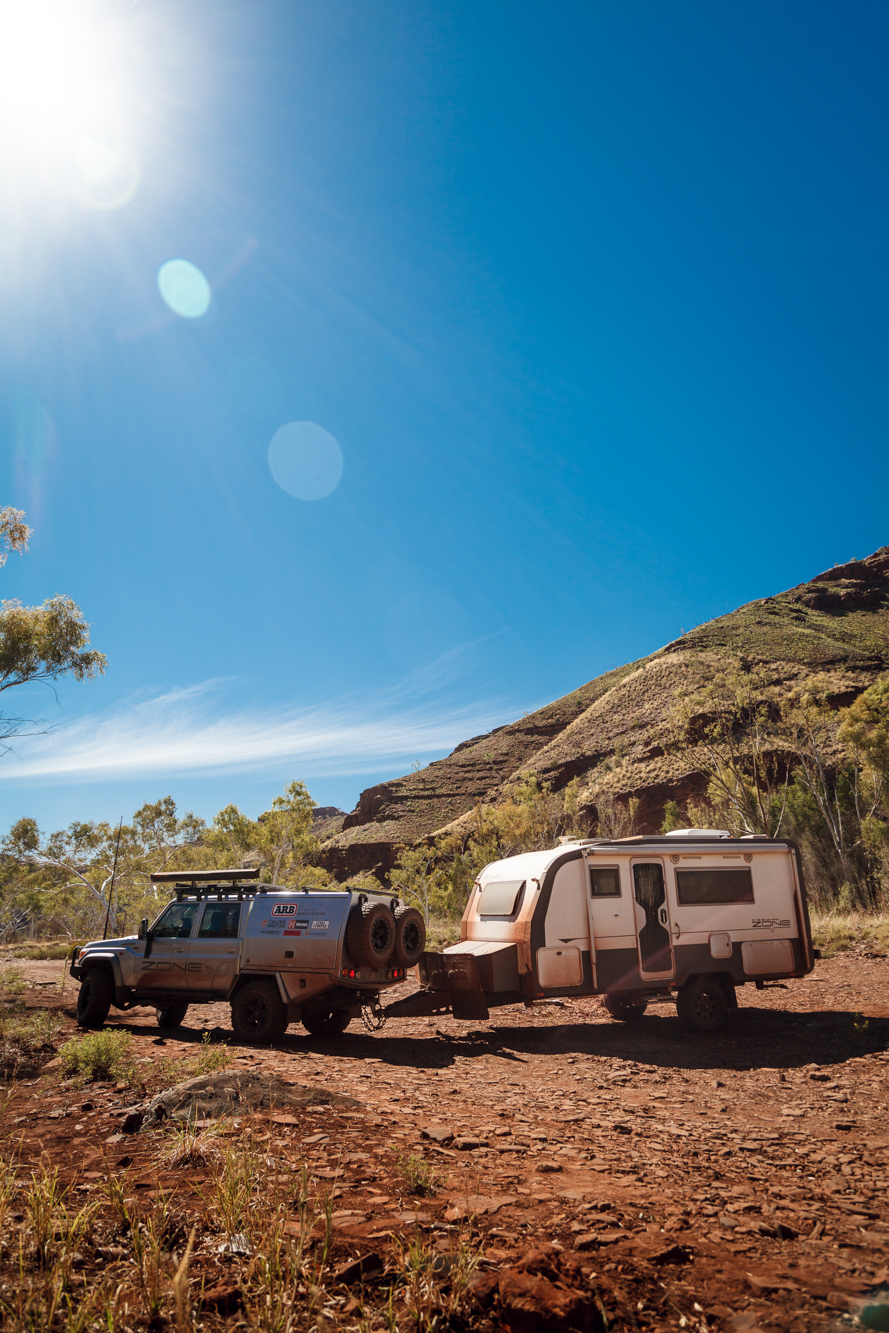
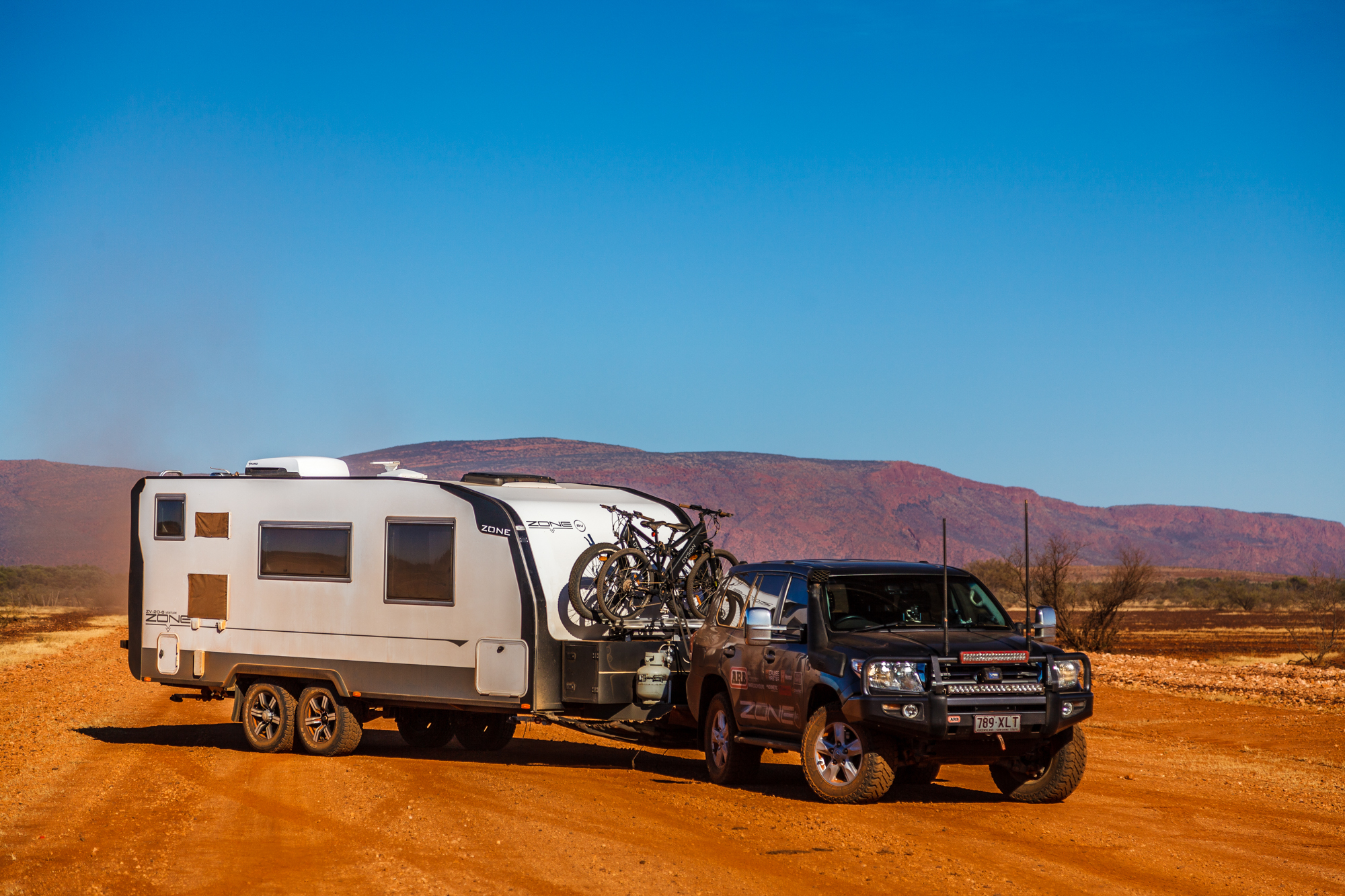
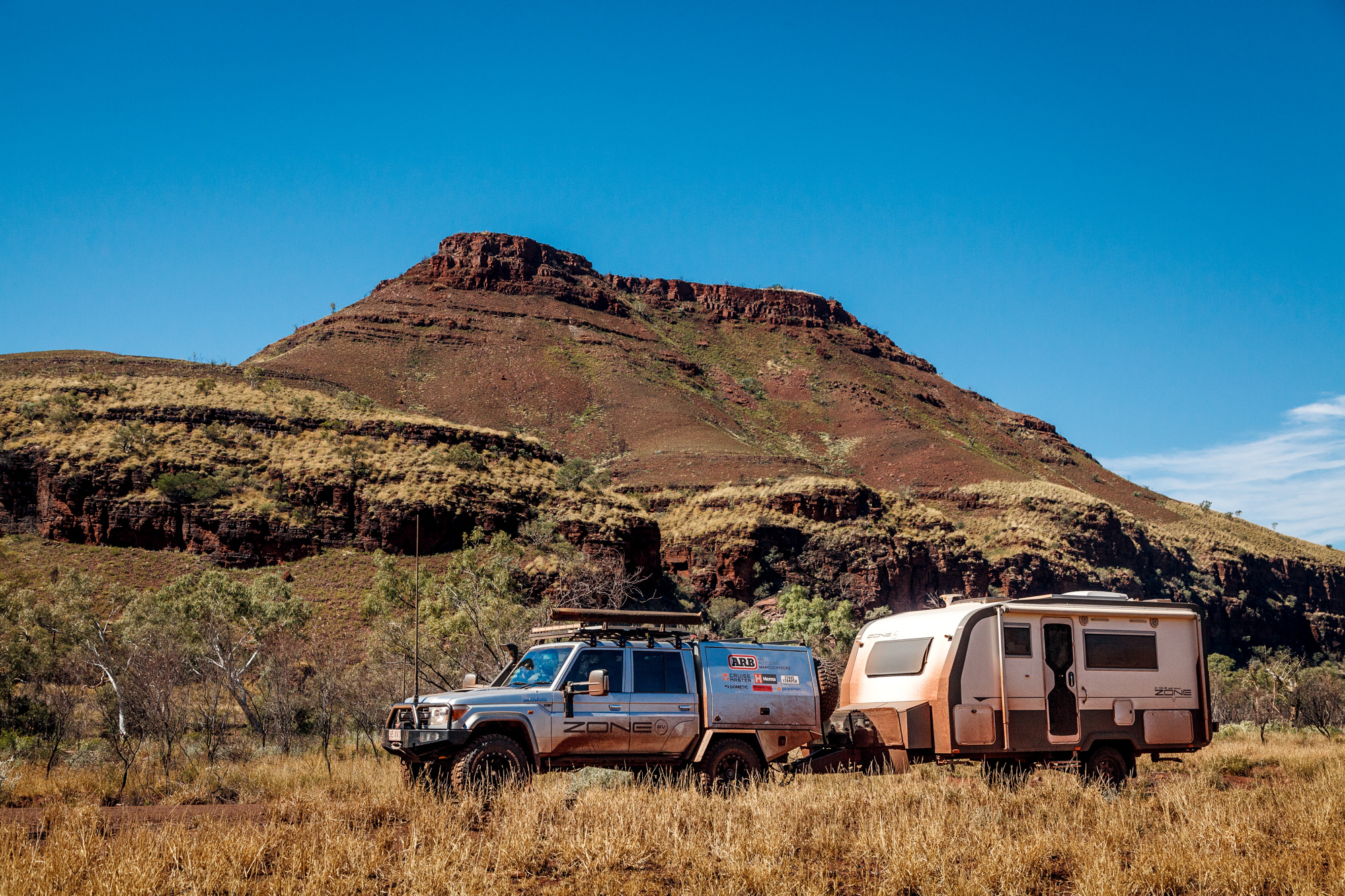
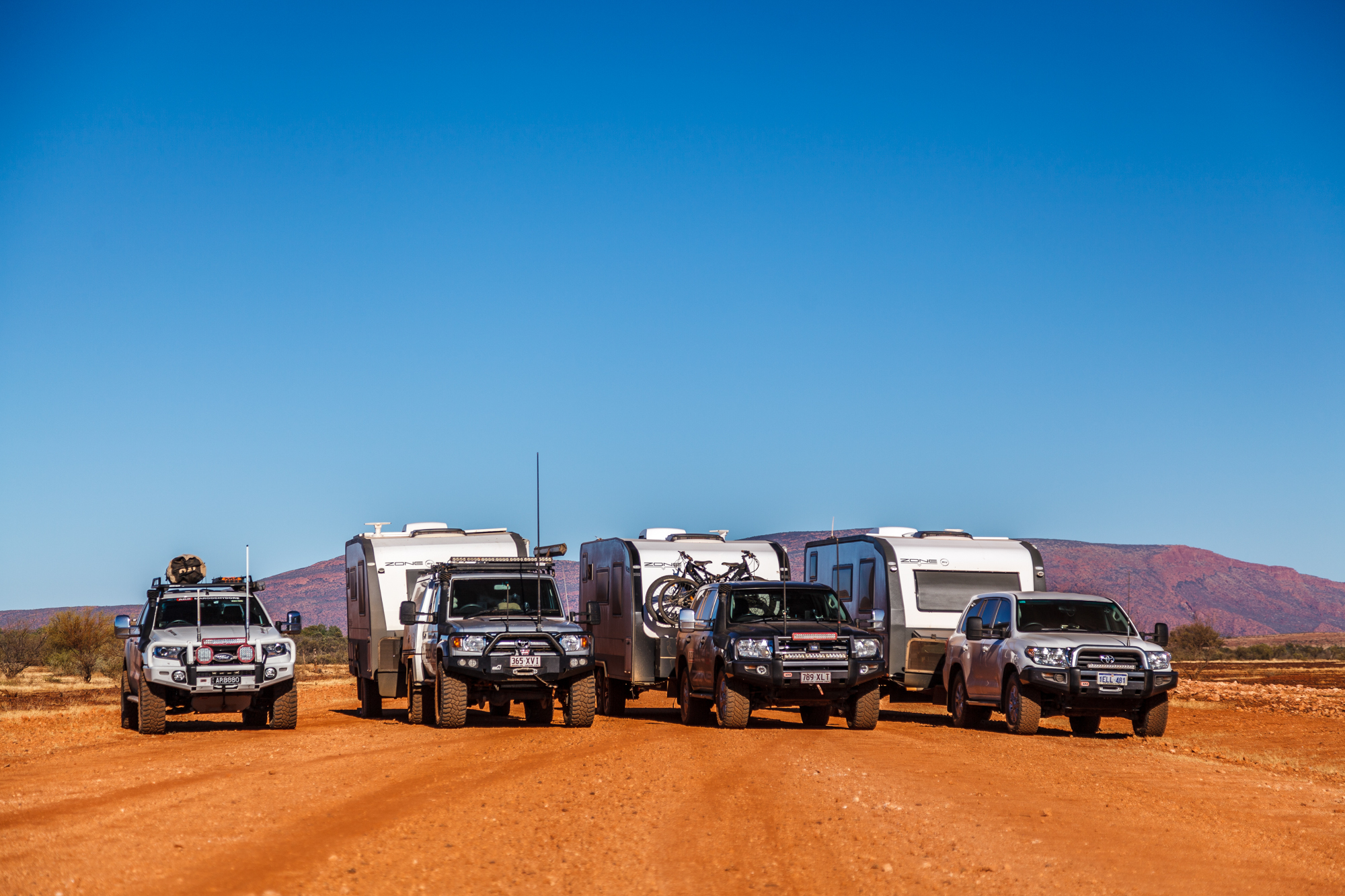
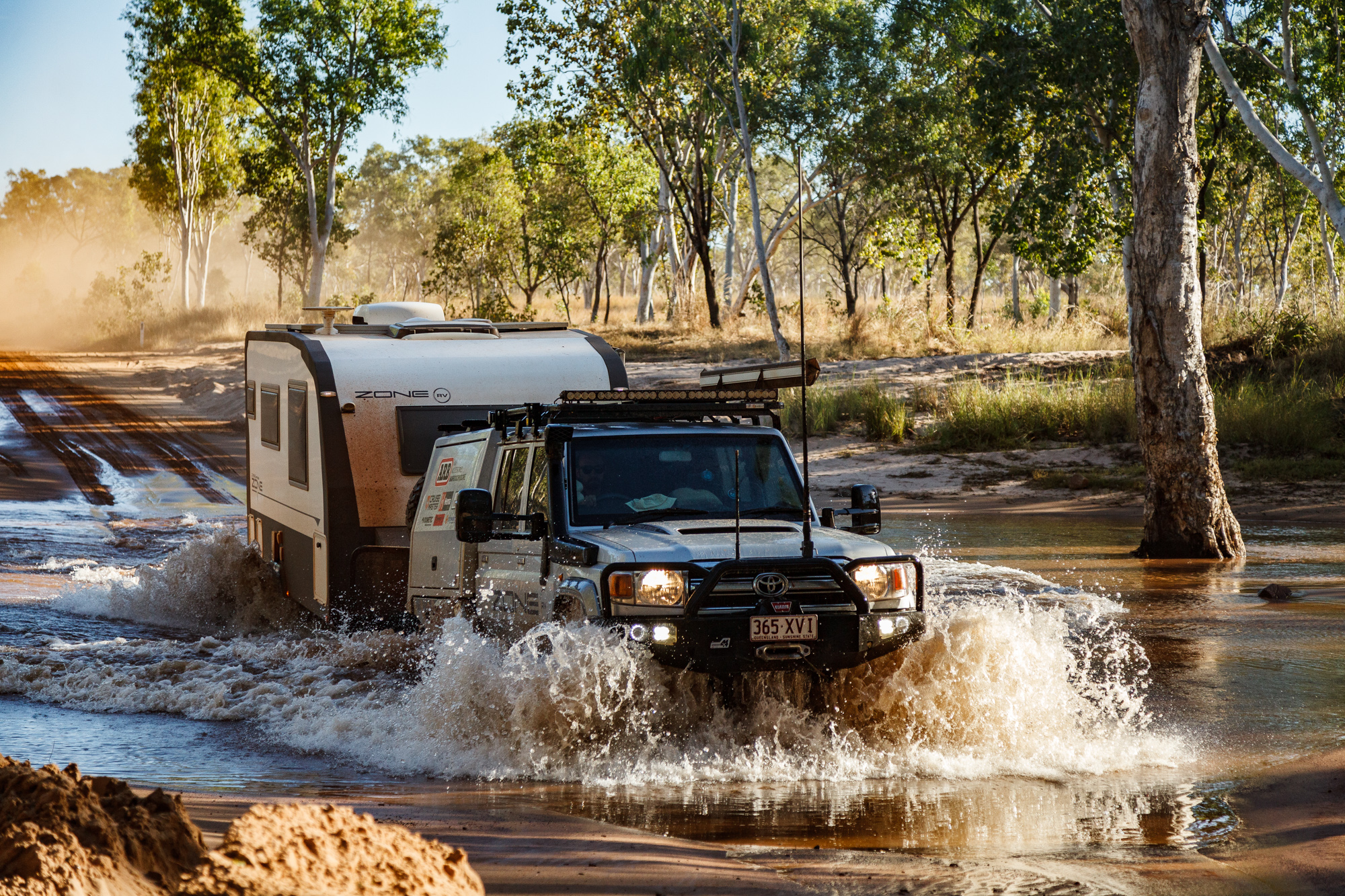 “Everyone will have their own unique challenges traveling these popular tracks, even after doing their extensive research prior, but we can all agree there’s always more to learn for next time. We encountered some unpredictable obstacles, as well as common issues we were able to rectify with the help of our sponsors who supported our expedition—namely ARB, Hema Maps, Cel-Fi, Cruisemaster, and Dometic—and we feel all caravaners and offroad enthusiasts can benefit from sharing in our experiences.” –Matt Johns
“Everyone will have their own unique challenges traveling these popular tracks, even after doing their extensive research prior, but we can all agree there’s always more to learn for next time. We encountered some unpredictable obstacles, as well as common issues we were able to rectify with the help of our sponsors who supported our expedition—namely ARB, Hema Maps, Cel-Fi, Cruisemaster, and Dometic—and we feel all caravaners and offroad enthusiasts can benefit from sharing in our experiences.” –Matt Johns
So sit back, relax, and follow along as this team explores some of Australia’s beautiful backcountry. When you’re done, head on over to Zone RV’s website to learn more about their amazing caravans and how they build them.


